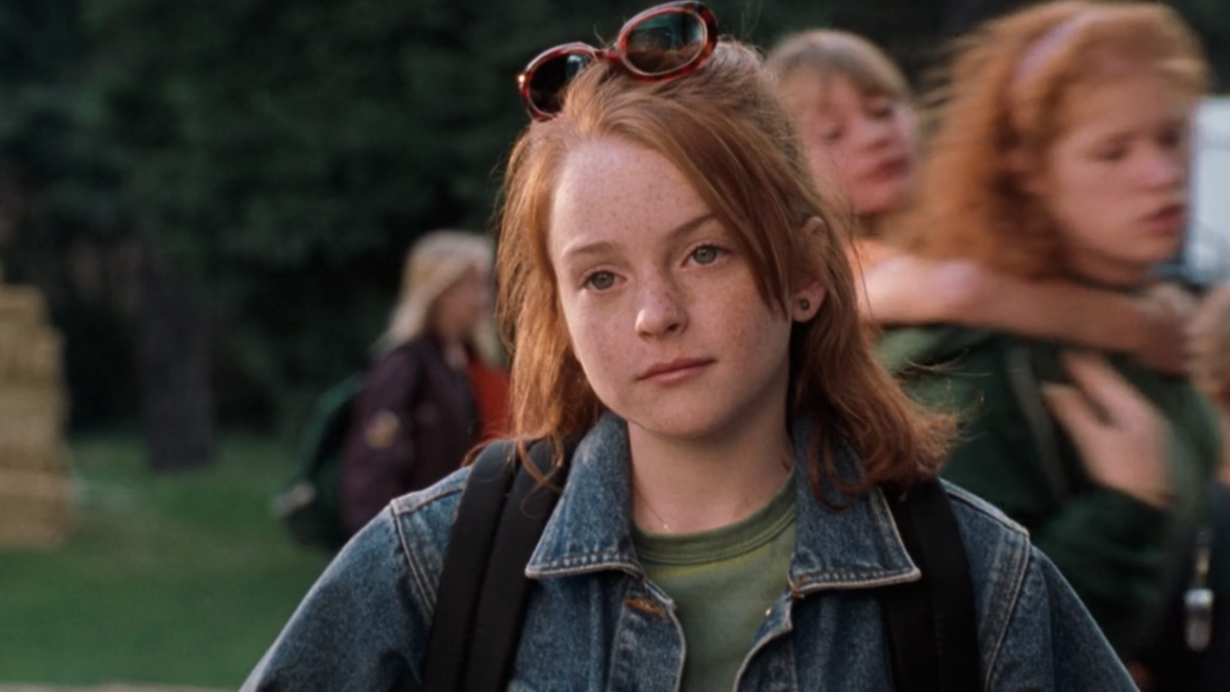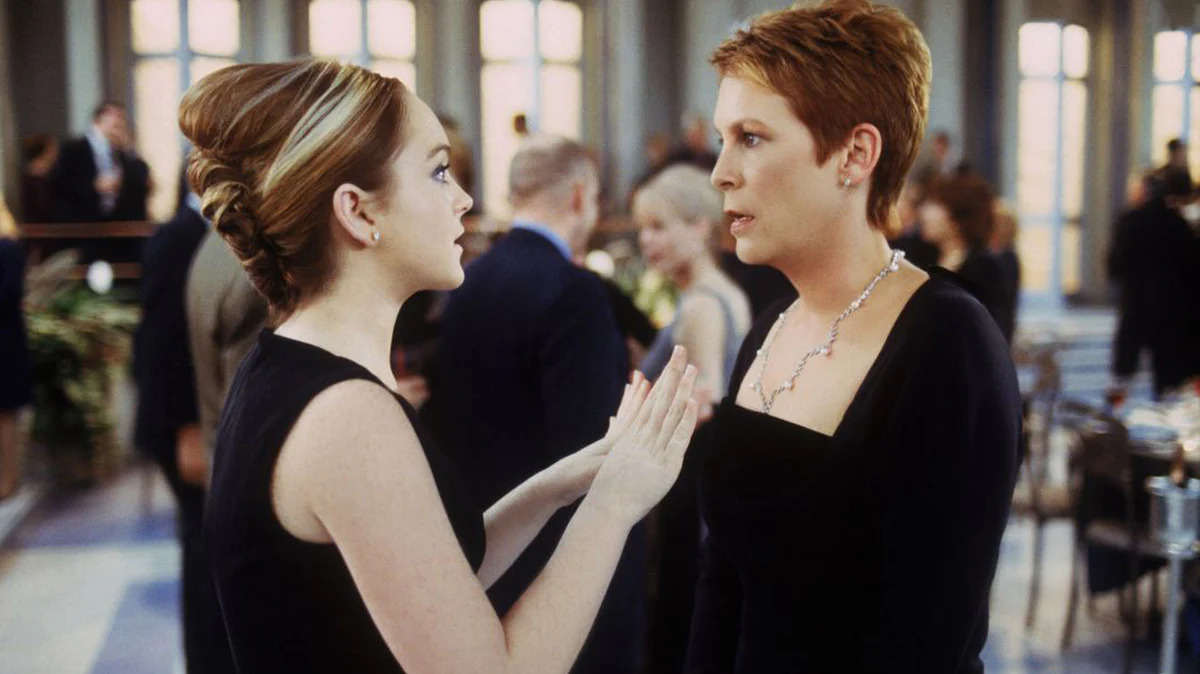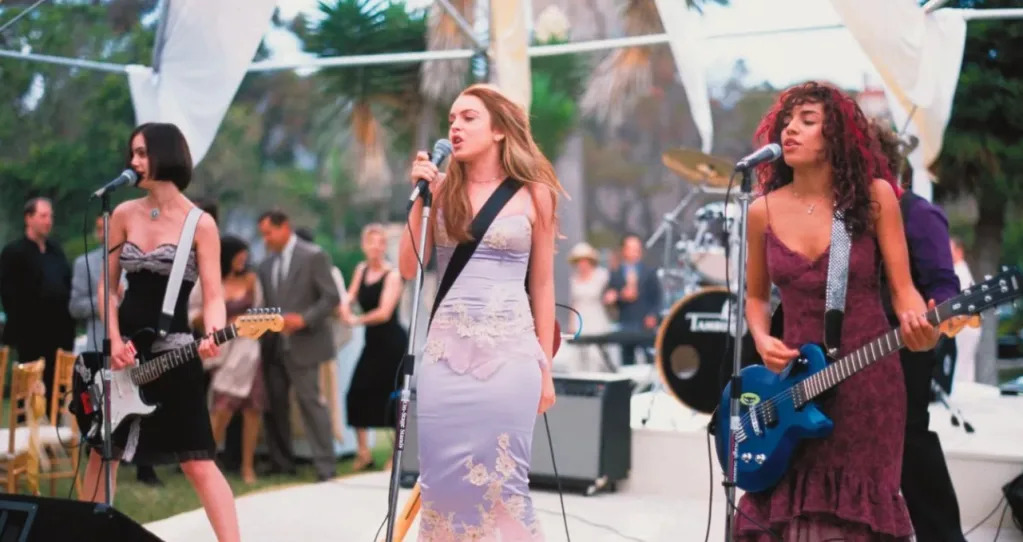Lindsay Lohan is back, steadfastly at once a star and an avatar for ourselves
‘As an 11-year-old, The Parent Trap [1998] felt so big to me,’ Lindsay Lohan told an interviewer at The New York Times in 2023. ‘I threw myself into everything: accents, green screens, playing two people. So I felt comfortable [acting] after that.’ The piece was marking the twentieth anniversary of the 2003 film, Freaky Friday, in which she played a teenager named Anna who wakes up one morning to find herself trapped in her mother’s body, and her mother, Tess (Jamie Lee Curtis), trapped in hers. What she was trying to suggest was that the role of Anna had not been much of a stretch, since she was already working very hard in her very grown-up job at an age when most girls were still playing with their Barbies. She might also have been saying, in a sense, that by the age of 16 she was no longer a stranger to posing as an adult in general. Lohan’s child-star roles were uniformly marked by a preternatural poise and maturity, making her age feel almost indeterminate at times in spite of her sweet, cherubic face. ‘[She] plays the dual role with apparent effortlessness,’ Janet Maslin wrote admiringly of her turn as twins in The Parent Trap, ‘and with such forcefulness that she seems to have been taking shy violet lessons from Sharon Stone.’ Later, it would become evident that life had been harder for Lohan as a child than her fans had known or imagined. “I feel like a second parent, in the sense that I helped raise my family,” she told Allure magazine in 2007, perhaps adding an additional layer of poignancy to her performance as Freaky Friday’s Anna – a character who must represent both experience and innocence, in whom the maternal and the filial collide.
In essence, Freaky Friday serves as a metatextual commentary on its star’s 2000s status as a former Disney kid who – to paraphrase her bimbo summit compadre – was no longer a girl, but was not yet a woman, either. In the scenes where Lohan is tasked with approximating Jamie Lee Curtis’s posture and affect, she is at her unbeatable best, all coiled-spring passive aggression and lip-pursing primness. The language of adulthood tumbles just as effortlessly from her lip-glossed mouth as the dudes, likes and ews of circa-2003 teen parlance, and watching her embodying a fortysomething person who is forced to pretend to be a child, it is easy to imagine that this is how Lohan might have felt among her peers – this huge star, this surrogate parent to her siblings, this actress who’d appeared on Good Morning America nine years before she was old enough to legally order a drink. Forget boys and detention: how was one meant to talk about all that at a kegger with Brandon and Tiffany and Danielle? Freaky Friday was a heart-warming comedy about generational difference and mother-daughter tenderness, yes, but it was also a film about what it is like to grow up too fast: how disorientating that can be; how like one of those nightmares where you turn up to school without your clothes. Only when Anna and Tess switch back do we get our happy ending. If you are a 16-year-old girl, being made to navigate the working world under pressure and at great personal risk does not, it turns out, magically transform you into an adult.

Now, 22 years later, we’ve been graced with a new legacyquel, Freakier Friday, whose ‘ier’ suffix promises more body-swapping, fresh ideas and perhaps a higher rate of jokes per minute. It delivers on the first point, at least. This time, Anna herself is a parent – to a teenage daughter named Harper (Julia Butters), whom Tess has helped to raise. She is also engaged to be married to a handsome English widower, Eric (Manny Jacinto), whose own daughter, a prissy, pretty clothes horse called Lily (Sophia Hammons), is Harper’s high-school nemesis. This time, the curse hits three generations, and all four women: Anna wakes up as Harper and vice versa; Tess and Lily, ditto. Bonding ensues, and the only thing that truly breaks the spell is familial love. The conceit is the same: the young experience being old, and the old find themselves rediscovering how it felt to be young. Functionally, Freakier Friday is a well-oiled millennial nostalgia machine. There is a Chumbawumba gag; there are two ‘Spice Up Your Life’ (1997) needle drops. There are also many references to ageing – more specifically, to the senescence of the body that begins in middle-age. Anna, much like your humble reviewer, is 37, and given that your humble reviewer arrived at her Freakier Friday screening with an unshakeable pain in the neck after sleeping in a very slightly different pose than usual, all the film’s bad knee jokes and gags about sluggish digestion rang appallingly true.

More interesting than Freakier Friday’s serviceable screenplay is the way that it reveals itself to be another fascinating work of art about being Lindsay Lohan. In 2003, in Freaky Friday, Lohan was pre-scandal; she was not yet the woman who had earned two DUIs, or spent two weeks in jail. Like all movie stars who have at one time or another achieved icon status, she is fated to carry her history with her onscreen, and no amount of squeaky-clean cinematic fare will erase our collective cultural memory of her youthful transgressions. In Freakier Friday, when she looks in the mirror and shrieks “I am literally my mother!”, it is difficult for those of us familiar with her past not to take in her very slender frame and her pale blonde hair and think of immediately of her real mother, Dina, another tabloid fixture of the noughties. Though it’s played as a joke, the moment has a certain terrible veracity: what woman over 35 hasn’t caught sight of herself in the glass and thought the same? Two decades is a very long time in the life of an actress, especially given that the industry behaves as though women age in dog years; Lohan has also not appeared in a film that received a theatrical release since 2013, when she delivered a spotty but often electrifying performance in The Canyons. She has not yet been given her role of a lifetime, and it’s true that Freakier Friday is not Oscar material. Nevertheless, the goal here is not critical acclaim but course-correction. Happily, she is more alive on camera in Freakier Friday than she has been in years. When the writing permits it, she is also very funny, especially in one slapstick scene: Anna, as inhabited by Harper, ‘flirts’ cluelessly with her old flame Jake (Chad Michael Murray), and Lohan is free to cut totally loose, vamping, chewing her lips and arranging herself into humiliating poses like a gorgeous buffoon. The Swiss-watch precision of her old comic timing clicks back into place, as if time is being rewound. The whole business lasts for about three minutes, but still, it’s a thrill.

Ultimately, there is something very striking about seeing Lohan being childish onscreen as an adult, as opposed to the way she appeared at the height of her fame. What if she really could go back? Picture her as she was in 2003: the red hair streaked with bleach; the eyes as clear and bright as key lights; the still-babyish roundness of her cheeks. Would she do it differently? Would the paparazzi let her? Would Rolling Stone, who ran a cover to mark her eighteenth birthday with the headline ‘hot, ready and legal’, as if she had gone to bed one night and woken up the next day as a different, adult person? In tone and execution, Freakier Friday is technically a movie for children. Its other target audience, however, is women who were children themselves when they first saw Anna onscreen, which is to say: it is a film made for girls who grew up with Lindsay Lohan. When Anna, a retired musician, finally takes to the stage and triumphantly plays her electric guitar at the climax of the film, and a stadium full of Gen Z fans goes wild, why was I so unexpectedly moved? Perhaps it was the obvious parity between this image of a woman rediscovering her talent, and Lohan’s own return to the cinema: away from the small screen of Netflix and back to the multiplex, where she was once so much larger than life in every sense of the phrase. Or perhaps this is simply the power of a true Hollywood star, even one who has been dormant for so long: that the force of their charisma induces an exchange with the audience, until their dreams become our dreams, and their failures our failures – so that, utterly transported in the dark, it is as if we begin to inhabit their bodies instead of our own.
Philippa Snow is a writer based in Norfolk. Her latest book is It’s Terrible the Things I Have to Do to Be Me (2025)
